*** Proof of Product ***

Exploring the Essential Features of “Autism in the Hospital: Supportive Strategies for Sensory, Communication and Behavioral Challenges – Susan Hamre”
Description
- Sensory, communication and behavioral challenges that impact successful medical treatment
- Strategies for ER triage, routine hospital visits, surgery and more
- Roadmap for treating a non-verbal, non-responsive individual with autism
- ‘Stimming’ behaviors as a strategy
- Subtle sign of less obvious ASD
Do you know how to give medical attention to a patient with autism who:
- Can’t answer your questions or identify levels of pain?
- Refuses to have blood drawn, give urine a sample, do dialysis or CT/MRI scan?
- Attempts to pull out lines or pull off bandages?
- Fights you off with piercing screaming and flapping of the arms?
- Can’t tolerate your touch and or make eye contact with you?
- Won’t stop running out of the treatment room?
- Refuses medication?
Whether the medical appointment is scheduled or it’s a trip to the emergency room the hospital can be a sensory minefield for someone with autism causing them to spiral toward a terrifying meltdown. Sedation and four-point restraint are not practical solutions.
Your connection to your autism patient will depend upon how quickly you can move into their world. Through case examples, videos and lively class discussion you will walk away with practical strategies for successful medical treatment of an individual with autism, such as:
- Hospital/EMT equipment to help support sensory needs
- Overcoming the most common sensory triggers
- Communication cards, checklists and Apps as visual supports
- Social stories to break down hospital/EMT procedures
- Navigate ER triage, routine hospital visits, labs and tests
- What to do when a meltdown occurs
- Calming techniques
Speaker
Susan Hamre, MA, CCC-SLP
Susan Hamre, MA, CCC-SLP, is an ASHA certified speech-language pathologist with over 40 years of clinical, teaching and research experience with autism in the home, school, hospital and community settings. She owns and manages a private practice in Santa Fe, New Mexico that serves individuals from infancy to adulthood, with an emphasis on Early Intervention, autism and various other challenging conditions. A clinician at heart, Susan has personally provided treatment for children as young as nine months, on up. She has had the pleasure of working with some individuals and their families for over 20 years.
Susan is a national presenter teaching treatment strategies for autism to rehab professionals, mental health clinicians and educators. She provides autism trainings to First Responders (Crisis Intervention Teams, firefighters and EMT. Susan was the Director of the Autism Training Center at Giant Steps in Illinois, where trained first responders, transportation systems, park districts, small and large venues, nursing colleges, medical centers, parent groups and public school systems. Years of professional experience backs up her ability to speak on this subject with conviction and passion.
Susan has made five Operation Smile mission trips; four to the Philippines and one to Africa. While those trips were medical in nature (cleft lip and palate), on every one of those trips, she was privy to identify the existence of probable autism, then steering the families in the right direction. Those situations underscore her belief that with trained eyes, the unique set of characteristics that cloak autism can be spotted at a very young age, in all sorts of environments and even when the same language is not being spoken
Speaker Disclosures:
Financial: Susan Hamre maintains a private practice and is a National Seminar CE Trainer. She receives a speaking honorarium and recording royalties from PESI, Inc. She has no relevant financial relationships with ineligible organizations.
Non-financial: Susan Hamre has no relevant non-financial relationships.
Target Audience
Nurses, Nurse Practitioners, Speech-Language Pathologists, Physical Therapists, Occupational Therapists, Other Healthcare Professionals
Objectives
- Utilize strategies to de-stimulate the ‘sensory minefield’ in your medical setting.
- Determine specific calming techniques that meets the need of your patient and increase the success of the medical experience.
- Identify critical questions to ask caregivers which can enhance the success of your treatment.
- Develop your ability to recognize a patient with undeclared and/or less obvious ASD.
- Characterize aspects of ASD that can interfere with a successful medical experience.
- Implement communication cards, social stories and visual supports to communicate with individuals who are non-verbal/under responsive.
Outline
- Autism in Medical Settings: Challenges and Supportive Strategies
- Sensory Integration Challenges
- Stimulation dysregulation (hypo/hyper)
- Seeking/avoiding/both
- Processing functions
- May not process nor perceive pain
- Common triggers within the hospital/ER environment
- Your hospital/ER as a ‘sensory minefield’
- Sensory Strategies
- Patient passport with sensory triggers listed
- Quickly create ASD friendly environment
- Allow sensory needs to occur to prevent a meltdown
- How to avoid most common sensory triggers
- Hospital equipment to help support sensory needs
- Social / Communication Challenges
- Social interaction holds the ‘key’… or not
- Literal translation of spoken language
- When they are non-verbal or unable to read body language
- Delayed auditory processing
- Impact of anxiety on communication
- Non-compliance and verbally offensive
- Social/Communication Strategies
- Communication cards, checklists and Apps as visual supports
- Social stories to break down hospital procedures
- Their interests or repetitive behaviors to generate your ‘connection’
- Make allowances for family to be nearby
- Behavior Challenges
- Noting functions of behavior
- May bolt/escape/elope
- Aggression occurs as anxiety increases
- Might resist restraint
- Anxiety may increase when transport is needed intolerant of transitions in general
- Likely to be resisting lack of known/familiar routine
- Attempt to pull out lines, pull off bandages, etc.
- Refuse medication
- Behavioral Management Strategies
- Is it a meltdown or tantrum?
- Know the child’s triggers
- Plan ahead to avoid triggers
- Specific calming techniques
- What to do when a meltdown occurs
- Navigating ER triage, routine hospital visits, labs and tests
- Visual schedules for what is going to be happening
- Strategies for loud noises and being touched
- Visual timetables and timers for transitions/ changes
- Motivation and reward systems that work
- What you need to know about non-sensory triggers
- ‘Stimming’ as a calming technique
- Sensory Integration Challenges
Please see the full list of alternative group-buy courses available here: https://lunacourse.com/shop/

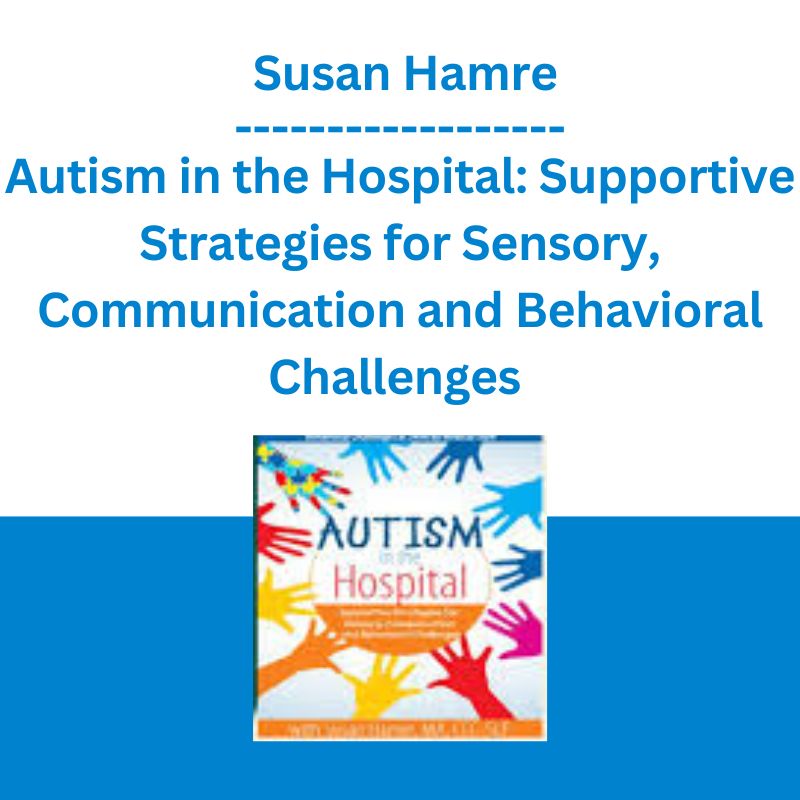








 Money Miracle - George Angell - Use Other Peoples Money To Make You Rich
Money Miracle - George Angell - Use Other Peoples Money To Make You Rich  Crypto Dan - The Crypto Investing Blueprint To Financial Freedom By 2025
Crypto Dan - The Crypto Investing Blueprint To Financial Freedom By 2025 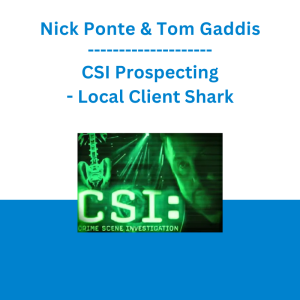 Nick Ponte & Tom Gaddis - CSI Prospecting - Local Client Shark
Nick Ponte & Tom Gaddis - CSI Prospecting - Local Client Shark  Atlas API Training - API 570 Exam Prep Training Course
Atlas API Training - API 570 Exam Prep Training Course  The Daily Traders – Exclusive Trading Mentorship Group
The Daily Traders – Exclusive Trading Mentorship Group  Erik Banks - Alternative Risk Transfer
Erik Banks - Alternative Risk Transfer  Simpler Trading - Bruce Marshall - The Options Defense Course
Simpler Trading - Bruce Marshall - The Options Defense Course  George Fontanills & Tom Gentile - Optionetics 6 DVD Series Home Study Course (Digital Download)
George Fontanills & Tom Gentile - Optionetics 6 DVD Series Home Study Course (Digital Download)  Greg Loehr - Advanced Option Trading With Broken Wing Butterflies
Greg Loehr - Advanced Option Trading With Broken Wing Butterflies  SMB - Options Training
SMB - Options Training  Steven Frankel - CC09 Law & Ethics 01 - Law & Ethics Workshop 1
Steven Frankel - CC09 Law & Ethics 01 - Law & Ethics Workshop 1  Dave Landry - Stock Selection Course
Dave Landry - Stock Selection Course  Jesse Livermore Trading System - Joe Marwood
Jesse Livermore Trading System - Joe Marwood  Forexmentor - Recurring Forex Patterns
Forexmentor - Recurring Forex Patterns  Persuasion Protocol - Kevin Hogan
Persuasion Protocol - Kevin Hogan  Hypnosis Bootcamp - Wealth Bootcamp
Hypnosis Bootcamp - Wealth Bootcamp  Karin Gurtner - Anatomy 101 with Tom Myers + Anatomy 201
Karin Gurtner - Anatomy 101 with Tom Myers + Anatomy 201  Team NFT Money - Ultimate NFT Playbook
Team NFT Money - Ultimate NFT Playbook  Matan Feldman - The 13-Week Cash Flow Modeling - Wall Street Prep
Matan Feldman - The 13-Week Cash Flow Modeling - Wall Street Prep  Lucas West - Demonic Confidence 2008
Lucas West - Demonic Confidence 2008  George Fontanills & Tom Gentile - Optionetics Wealth Without Worry Course
George Fontanills & Tom Gentile - Optionetics Wealth Without Worry Course  Judith Matz - When Diets Don't Work: 3 Steps to Transform Your Relationship with Food and Your Body - PESI
Judith Matz - When Diets Don't Work: 3 Steps to Transform Your Relationship with Food and Your Body - PESI  Trade Like Mike - The TLM Playbook 2022
Trade Like Mike - The TLM Playbook 2022  Sovereign Man Confidential - Renunciation Video
Sovereign Man Confidential - Renunciation Video  Alexander Swan - Understanding Cognitive Biases
Alexander Swan - Understanding Cognitive Biases  Stephen Gilligan - BT14 Invited Address 05 - The Three Positive Connections Needed for Transformational Change
Stephen Gilligan - BT14 Invited Address 05 - The Three Positive Connections Needed for Transformational Change  Alphashark - The AlphaShark SV-Scalper
Alphashark - The AlphaShark SV-Scalper  Pete Draovitch - Wilk PTI Online: Pathoanatomy and Compensatory Soft Tissue Differential Diagnosis
Pete Draovitch - Wilk PTI Online: Pathoanatomy and Compensatory Soft Tissue Differential Diagnosis  Chris Capre - Advanced Price Action Ongoing Training & Webinars
Chris Capre - Advanced Price Action Ongoing Training & Webinars 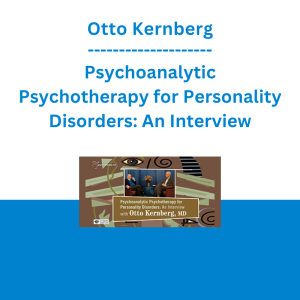 Otto Kernberg - Psychoanalytic Psychotherapy for Personality Disorders: An Interview
Otto Kernberg - Psychoanalytic Psychotherapy for Personality Disorders: An Interview 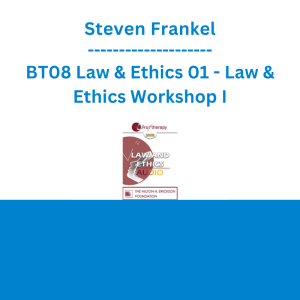 Steven Frankel - BT08 Law & Ethics 01 - Law & Ethics Workshop I
Steven Frankel - BT08 Law & Ethics 01 - Law & Ethics Workshop I 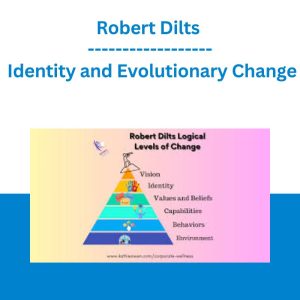 Robert Dilts - Identity and Evolutionary Change
Robert Dilts - Identity and Evolutionary Change 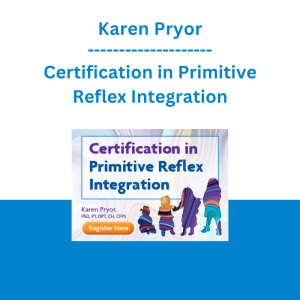 Karen Pryor - Certification in Primitive Reflex Integration
Karen Pryor - Certification in Primitive Reflex Integration  Calamari Productions - Chelsea - Surrendered to the State
Calamari Productions - Chelsea - Surrendered to the State  Free From Axiety - Peter Crone
Free From Axiety - Peter Crone  William Brown - Build Grow & Exit DIY
William Brown - Build Grow & Exit DIY  Oliver Velez - Essential Strategy Of Trade For Life
Oliver Velez - Essential Strategy Of Trade For Life  Lois Fenner - Legal and Ethical Issues in Behavioral Health in Arkansas - PESI
Lois Fenner - Legal and Ethical Issues in Behavioral Health in Arkansas - PESI  Steven Capobianco - Advanced Movement Specialist Certification - PESI
Steven Capobianco - Advanced Movement Specialist Certification - PESI  Rubin Battino - IC07 Conversation Hour 06 - Meaning: The Life of Viktor Frankl An Illustrated Solo Reading
Rubin Battino - IC07 Conversation Hour 06 - Meaning: The Life of Viktor Frankl An Illustrated Solo Reading  Jennifer Okemah & Tracey Long - Diabetes Management for Healthcare Providers: Advanced Certificate Course
Jennifer Okemah & Tracey Long - Diabetes Management for Healthcare Providers: Advanced Certificate Course  Enlightened States - Subconscious Limits Dissolver Through Your Higher Self
Enlightened States - Subconscious Limits Dissolver Through Your Higher Self